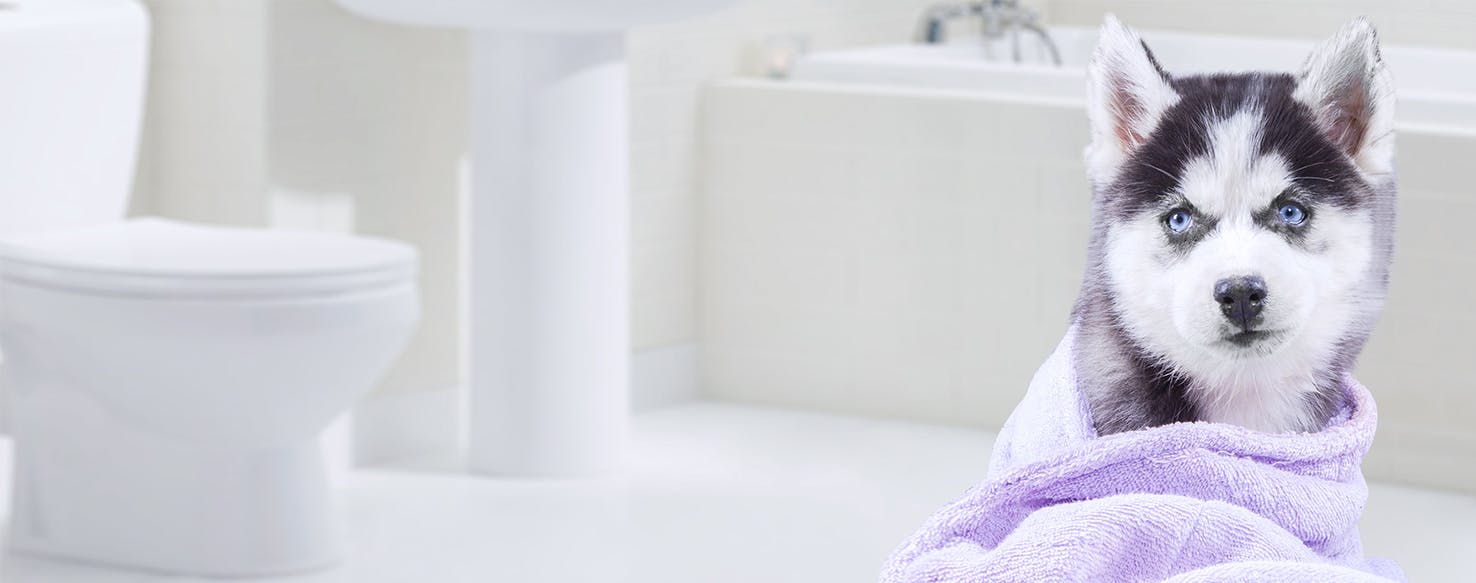- Home
- The Daily Wag!
- Behavior
- Why Dogs Cry When They Go To The Bathroom
Why Dogs Cry When They Go To The Bathroom

Unusual
Concerning
Introduction
Dyschezia. It’s a big, ugly sounding word that describes a very unpleasant condition. It literally means “painful defecation” and is the proper medical term for what happens when your dog cries out or yelps in pain while trying to go poop. Elimination seems simple. Food goes in, feces comes out. But there’s a lot that can happen in the meantime. Changes in diet, changes in schedules, even changes in weather can affect your dog’s bowel habits. Pain when defecating may not even have anything to with external changes. Your dog may have pain when she goes to the bathroom because of medical conditions ranging from parasites to hip dysplasia.
The Root of the Behavior
There are a lot of reasons why a dog may have pain with defecation. Some are more serious than others, but all are distressing. No one likes to see their dog in pain, especially when she’s just answering nature’s call. But if and when it happens to your furbaby, you need to keep calm and get some information so that the reason and the cure can be found quickly. A healthy dog generally defecates two to three times a day. A dog has a short colon, which is, of course, connected to his stomach. When a dog’s stomach is full, the colon receives a signal to begin its work. Constipation is when the body passes hard, dry feces, usually in small amounts, passed with less frequency and is normal for the animal. Constipation often comes from decreased water intake and dietary changes, especially with excessive dry food. Certain medications can cause constipation, especially antihistamines and opioids. Other factors that can lead to constipation in dogs is illness such as cancer, infections of the prostate gland, and anal gland abscesses. Finally, your dog may have eaten something she shouldn’t, and has developed a blockage.
True constipation is unusual in dogs. People usually see dogs straining to pass stool and assume its due to constipation, but straining is also related to spasms in the colon due to colitis. These spasms fool your dog into thinking she has to poop, but when she attempts to go, she won’t pass anything, or otherwise, may only pass blood and/or mucus. If you see this coming from your dog, please visit the vet as soon as possible. Your dog may also cry when defecating if she has diarrhea. Diarrhea can be caused by many painful conditions, including intestinal bowel disease, parasites, allergies, and even food poisoning. Diarrhea can quickly turn dangerous, so take your dog to the doctor if she has more than a couple of loose bowel movements, or if you see blood or mucus.
Need advice about your pet's health?
Get answers fast from a veterinary professional 24/7 in the Wag! App.
Get Vet ChatEncouraging the Behavior
There are a lot of different reasons your dog may have pain when she defecates. Some reasons are more concerning than others. Once you have spoken to a vet and ruled out the most concerning problems, or better yet, resolved the issue, there are some steps you can take to help your dog avoid having these issues going forward. Make sure that your dog keeps to a schedule. Changing a dog’s schedule can disrupt her natural body processes. When changing your dog’s food, be sure to do it slowly. Try mixing new food in with her old food for a few meal times prior to the switchover. Make sure that your dog has access to plenty of water, especially when it’s warm outside. Whenever your vet gives medication to your dog, be sure to ask if the medicine will cause any change in her bowel habits. If your dog is constipated, do not give her laxatives without talking to your vet about dosing and potential interactions with anything else she may be taking. Be sure that you are feeding your dog high-quality food. Some dog foods have a very high level of fiber, which can cause your dog to have difficulties with her stools. When you first notice your dog having difficulty with constipation, try mixing unsalted pumpkin puree into her food.
Other Solutions and Considerations
When it comes to your dog, you are the expert. Be sure to pay attention to her bowel habits and if you notice a change, pay attention to her other habits. Is she still eating and drinking? Or is she lethargic? Has she been licking her lower abdomen and anus excessively? If there is a problem with your dog's elimination habits, your vet will need to know about any changes in her daily habits. If you are a responsible dog owner and are cleaning up after your dog, you will become familiar with her feces. Cleaning up after your dog is also a good way to collect stool samples for a check-up or if you are concerned. Try to collect at least a teaspoon of stool. The stool should be refrigerated, but not frozen unless you suspect that your dog has parasites. In that case, you should not put the sample in the refrigerator. And try to get the sample to the vet as soon as possible, ideally within 24 hours.
Conclusion
“Everybody Poops” is the title of a famous children’s book. And it’s true. But sometimes, pooping is more difficult than other times. Think about the last time you had bathroom difficulties. It was embarrassing and distressing and painful. Well, your dog is going through the same thing. For people, we can take steps to relieve the problem, but our dogs only have us for help. Pay attention to your dog and you can help her feel better quicker.
Written by a Chow Chow lover Jodi Mai
Veterinary reviewed by:
Published: 03/09/2018, edited: 01/30/2020
More articles by Jodi Mai
